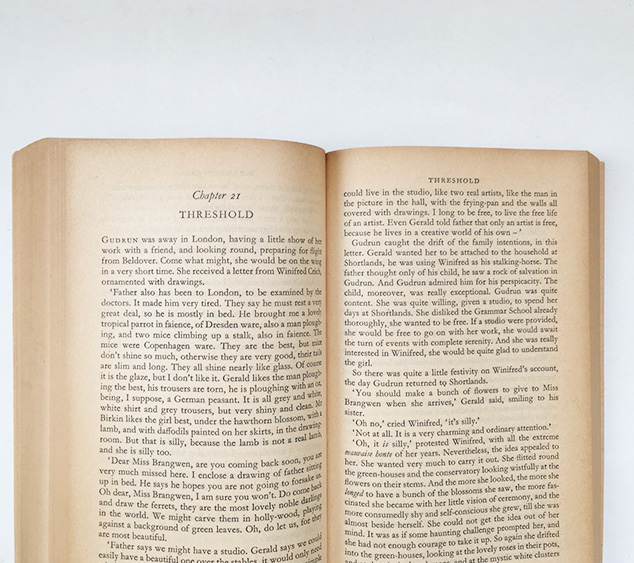ON HAVING BOOKS TO FIND LOVE (AND ITS RELATED SENTIMENTS)


The Seumpama Team are not the best in articulating love and emotions. Our best attempt of affection has always been shown with the every-now-and-then hugs that will always be followed with awkward jokes just to cover the intense transfer of emotions that had happened. So, we have tried to denied the pressure of having something special for February and its loving entangled topics. However, as we are preparing some books to be uploaded, we kept encountering books that would make a perfect date – or have a great conversation on – with a perfect date.
1. Wuthering Heights by Emily Brönte

Hands down our emotions were all over the place when we read this book. Heathcliff and Catherine’s infatuation, heartbreaks, revenge, and search of the meaning of true love remain relevant despite the book being written in 1847. It’s Emily Bronte’s only book, which she wrote just a year prior her death; and it had became a classic tale of passionate love.
2. Spiritual Sayings by Kahlil Gibran

In every other sayings, or poems, or plays, or essays that Gibran wrote, our heart is filled with a fuzzy warm feeling. We love how he put words to the Lebanon that you see, and how different it is in his eyes. The argument prolonged, but how they both found their Lebanon in their heart felt so intimate that it almost feel like reading a love letter.
And then there are excerpts like one from Your Thought and Mine:
Your thought is a tree rooted deep in the soil of tradition and whose branches grow in the power of continuity. My thought is a cloud moving in the space. It turns into drops which, as they fall, form a brook that sings its way into the sea. Then in rises as vapor into the sky.
which made us ascribed to the idea that reading Gibran is about finally understanding that love can’t be a mere word; that there are unseen emotions and affections oblivious to the importance of having words to describe their existence, yet they always there.
3. The Woman of Rome by Alberto Moravia

We like the idea of capturing a different angle of love and emotion: refusal, obsession, corruption, bertrayal and vanity which role appear every now and then in the romantic realm, as we know it. Hence the story of a young prostiture. Adriana, the daughter of a seamstress living in a Roman slum during the facist regime of Mussolini staged the other side beautifully. Adriana, a simple girl with no fortune but her beauty who models naked for a painter, accepts gifts from men, and could never quite identify the moment when she traded her private dream of home and children for the life of a prostitute. Her existence may seems superficial, but the depth of her presence had tortured a failed revolutionary who refuses to admit his love for her and a Secret Police officer who’s obsessed with her; as well as those who wants to treat – and keep her – as part of their property.
4. Women in Love by D.H. Lawrence

Women in Love is about the relationships of two sisters, Ursula and Gudrun, who live in a Midland colliery town in the years before the First World War. Ursula falls in love with Birkin (a self-portrait of Lawrence), and Gudrun has a tragic and demoniac affair with Gerald, the son of the local colliery owner.
This penetrating and disturbing novel is concerned with the thoughts, beliefs, and passions of these four main characters and of their friends – brilliant and often cruel sketches of people Lawrence knew.
Lawrence himself considered this book to be his best, and the one which set forth most clearly his ideas of modern society.
5. A Farewell to Arms by Ernest Hemingway

How can dry dialogues and seemingly bland narratives transfer so much emotion and passion like Hemingway did with his works, still compell us. But he always do that. A Farewell to Arms is an ode to love in the midst of war. Using his own experience volunteering during the Italian Arditi 1914-1918 War, Hemingway capture the man who falls in love with an English nurse. There is the interlude from the battle, and romance of his convalescence; then on returning to the front he finds himself part of the disorganized retreat, and the pace of this intensely exiting episode increases in the final section after he has rejoined the girl he loves and his bitter feelings about the fighting with his passion for the woman who bears his child.
6. The Moon and Sixpence by Somerset Maugham
This one is a tale of passion to art and the courage to pursue it even when the world’s not listening to you; it is a study in the artistic temperament.
Charles Strickland, a London stockbroker in middle life, suddenly abandons his business career, his wife, and all the ties which hold him to conventional society, to follow the imperative call to translate his interior visions into paint. After years of struggle in Paris, where he fails completely to achieve recognition, he sets out for Tahiti at the age of 47, when most men have settled comfortably into a groove, and there, while covering with astounding pictures the walls of the hut which he shares with a devoted Polynesian woman, dies of leprosy.
By his own injunction, his companion destroys his work after his death, and only on the discovery of the canvases he had carelessly tossed aside during his years of unrewarded self expression does the world of art realise that it has lost a genius.
Maugham visited Tahiti, where Paul Gauguin spent a lot of his time working as a painter after leaving his wealthy life in London; and came back with Gauguin in his mind when he started writing this book.
—
Have a reading-worthy week!

